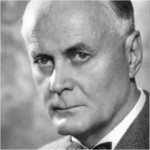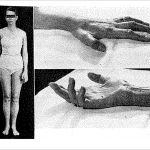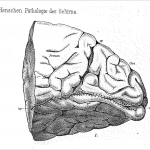Chapters in the history of Swedish Neuroscience – Swedish Academic Neurology: a brief outline
by Sten Fredrikson
This year, 2012, it is 125 years since the first chair of neurology was established at Karolinska Institutet in Stockholm. 1887, only a few years after Charcot’s appointment in Paris, the first Swedish professor of neurology, Per Johan Wising, started his activities at Karolinska Institutet including clinical teaching at the Serafimer Hospital in Stockholm. The establishment of his professorship was made possible thanks to a private donation. Already in 1888 it was decided that 2 months, of the 8 months that the medical students spent in the clinic of medicine, should be mandatory to spend in the new neurological clinic. Per Johan Wising, who had visited Charcot several times, left the professorship already in 1890.
After a short interlude by A.T. Hwass during 1890 the new appointed professor was Frithiof Lennmalm who had the chair of neurology for more than 30 years and also held the position as president of Karolinska Institutet for six years. Lennmalm’s main scientific interest was lues.
He was succeeded by H. Marcus 1924-1931, interested in diseases of the basal ganglia. The next professor of neurology was N. Antoni who held the chair from 1931 to 1954. Antoni had broad neurological interests and during his time there was a strong expansion of neurology. Antoni also took the initiative to establish the Swedish Neurology Society in 1938. During Antoni’s time, five new professors were trained at the Serafimer Hospital to set up and establish new departments of neurology outside Stockholm. 63 years after the first Swedish chair of neurology, the first chair outside Stockholm was established in Lund 1950, followed by Gothenburg 1951, Uppsala 1958 and Umeå 1960.
The first female professor of neurology in Sweden was Lisa Welander in Umeå 1964-1975.
The last university hospital with a new chair of neurology was Linköping in the 1970s.
Since the EFNS2012 will take place in Stockholm, it may be of interest to foreign visitors to know something about some historical contributions to neuroscience from this city and Karolinska Institutet. Other major achievements from other Swedish universities will be described and highlighted at the Special Session “Chapters in the history of Swedish Neuroscience” at EFNS 2012 in Stockholm, Tuesday, September 11.

Another major contribution was Salomen E Henschen’s studies of the visual pathways (On the value of the discovery of the visual centre). He demonstrated for the first time that the cortical area of the visual system is localized in the calcarine fissure of the occipital lobe. He was nominated nine times for a Nobel Prize, but was never awarded the prize.
Two other neuroscientific researchers at Karolinska Institutet who were awarded the Nobel Prize are Ragnar Granit for discoveries of visual processes in the eye and Ulf von Euler for discoveries of transmitters (noradrenaline/norepinephrine) in the nerve terminals.

R. Granit is the second KI researcher to receive the Nobel Prize in Physiology or Medicine. It was awarded for his discoveries concerning retinal function and optical nerve cells' response to light stimuli, colour and frequency
Some clinically well-known contributions from Karolinska Institutet in the neurological field worth mentioning are Karl Axel Ekbom’s first review and delineation of restless legs in 1945, Lisa Welander’s description of 249 cases of Myopathia distalis tarda hereditaria/ Distal Myopathy in 1951 and Lars Leksell’s description of a “stereotaxic apparatus” for intracerebral surgery in 1949 and application in radiosurgery in 1951.
Sten Fredrikson is Professor of Neurology, working at the Department of Clinical Neuroscience/ Division of Neurology, Karolinska Institutet, Stockholm, Sweden. He is Chairman of the Local Arramngements Committee and vice-chair of the Congress Programme Committee of EFNS 2012.





